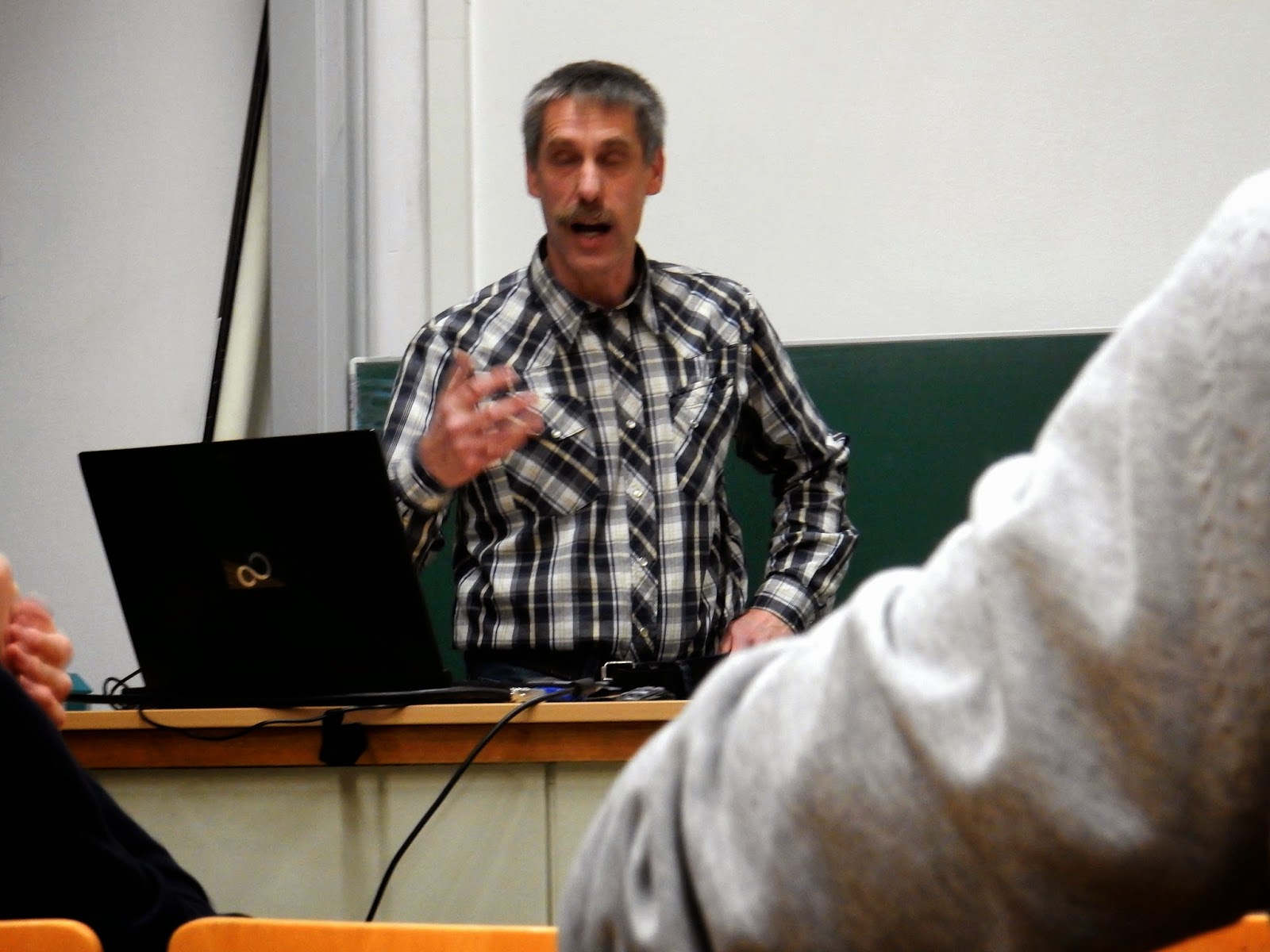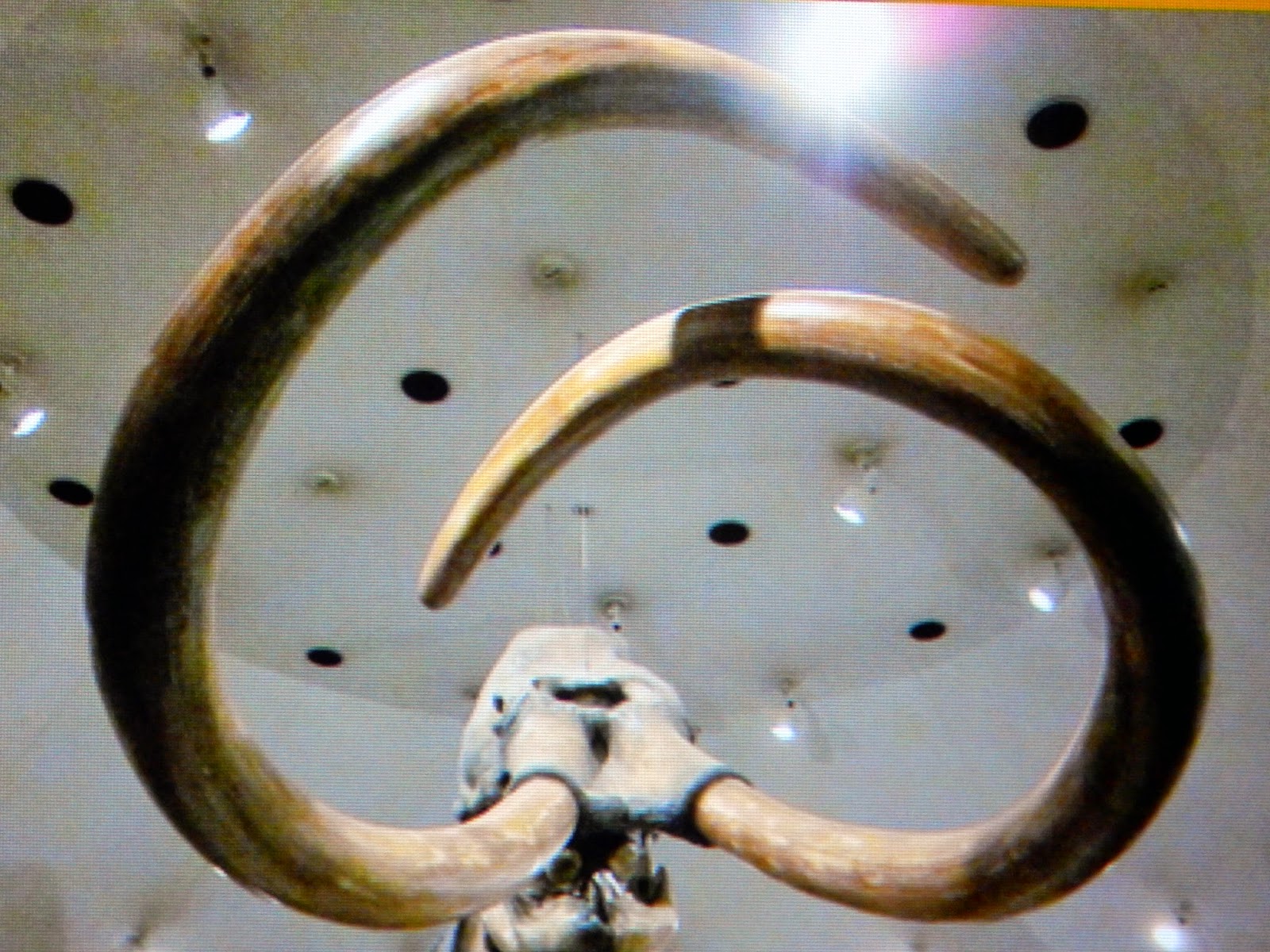attending Die Rancho La Brea und das George C. Page Museum, at the Palaeontology Museum here in Munich last week: http://www.palmuc.de/bspg/index.php?option=com_content&view=article&id=90&Itemid=144 , represents the crowning of long and fashinating dialogs I had recently at the EPO Skybar with our Gianni about various palaeonthological subjects, but mainly concerning Smilodons http://en.wikipedia.org/wiki/Smilodon , Pleistocene megafaunal extinction http://en.wikipedia.org/wiki/Pleistocene_megafauna and Neanderthals http://en.wikipedia.org/wiki/Neanderthal . The site of Rancho La Brea: http://en.wikipedia.org/wiki/La_Brea_Tar_Pits , as you can see from the images, preserves rests of the American megafauna animals, mainly bones unfortunately disarticulated, lovely collected and prepared at the Page Museum http://www.tarpits.org/ . The identification of the bones belonging to single animals in order to reconstruct their skeletons is a problem adumbred by the lecturer, but he provided no solution. Personally, I think that genetic identification surely can help but require a tremendous effort. Better would be tomographically scan each bone and let the identification of the bones of single animals to a super computer using a program like ePuzzle : http://www.bbc.com/news/magazine-19344978
http://www.bstu.bund.de/DE/Archive/RekonstruktionUnterlagen/virtuelle-Rekonstruktion/virtuelle-rekonstruktion_node.html .
Please let me know your opinion.
Salutations
Giancarlo




















Keine Kommentare:
Kommentar veröffentlichen